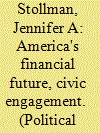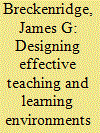|
|
|
Sort Order |
|
|
|
Items / Page
|
|
|
|
|
|
|
| Srl | Item |
| 1 |
ID:
096394


|
|
|
|
|
| Publication |
2010.
|
| Summary/Abstract |
Institutions of higher learning reflect the philosophies, environments, and resources of their location. Fort Lewis College sits in the San Juan Mountains, a part of the Rocky Mountain chain in southwest Colorado. Throughout its history, the College has successfully transformed itself to suit the needs of its students. Flexibility is demonstrated in frequent changes in focus, curriculum, student population, and programming. Founded as an agricultural high school in 1911, the College transitioned to a two-year college in 1927, implemented an agricultural and mechanic two-year degree program in 1933, assumed junior college status in 1948, and finally, in 1962, became a baccalaureate degree-granting institution that centered its educational objectives around a liberal arts philosophy. Additionally, the College's diverse faculty and student population impact the curriculum and programs. Students of differing classes, ethnicities, regions, and faith traditions share intellectual and physical space. Presently, the student population is just under four thousand, and there are approximately two hundred tenure or tenure-track faculty. Eighteen percent of the student population is native, representing over 125 different nations, but principally the Navajo nation. These statistics require the College to adjust its curricular objectives to suit the intellectual levels and goals of its students.
|
|
|
|
|
|
|
|
|
|
|
|
|
|
|
|
| 2 |
ID:
095868


|
|
|
| 3 |
ID:
149095


|
|
|
|
|
| Summary/Abstract |
This review article provides a reading guide to scholarly literature published in English about Nepal's political transformation since 2006, when Nepal's decade-long civil conflict between Maoist and state forces formally ended. The article is structured around four major themes: (1) the Maoist insurgency or ‘People's War’; (2) state formation and transformation; (3) identity politics; and (4) territorial and ecological consciousness. We also address the dynamics of migration and mobility in relation to all of these themes. Ultimately, we consider the Maoist movement as one element in a much broader process of transformation, which with the benefit of hindsight we can situate in relation to several other contemporaneous trajectories, including: democratization, identity-based mobilization, constitutional nationalism, international intervention, territorial restructuring, migration and the remittance economy, and the emergence of ecological and other new forms of consciousness. By looking across the disciplines at scholarship published on all of these themes, we aim to connect the dots between long-standing disciplinary traditions of scholarship on Nepal and more recent approaches to understanding the country's transformation.
|
|
|
|
|
|
|
|
|
|
|
|
|
|
|
|
|
|
|
|
|